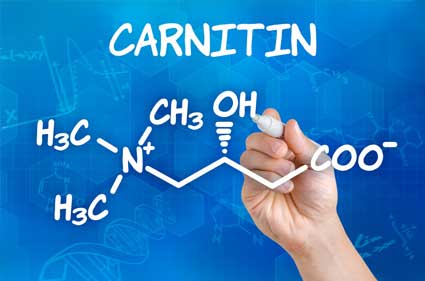Amino acids and their significance for healthy hair
Methionine strengthens the nails and helps prevent hair loss
Methionine contains sulphur which can build chains, which themselves create networks and this is exactly what happens in hair and nails. Methionine can therefore considerably strengthen the hair structure and nails. Methionine can also help against hair loss.1 In 2006 at a dermatological congress in Florence the results of a study carried out on patients with hair loss was released. The thirty subjects were divided into two groups. One group was administered a preparation of amino acids and vitamin B complex and the other was given a placebo. The result was that after half a year the portion of hair in the growth phase was ten percent higher in the methionine group than in the placebo group.2
Arginine boosts hair growth
Several publications indicate that the amino acid arginine has an enormous effect on hair growth. As a precursor to nitrogen oxide, it is of vital importance for hair growth. The vasodilatory effect of arginine promotes hair growth as the nitrogen oxide generated from arginine opens the potassium channels of the cells. The blood supply to the hair root is then improves, which in turn stimulates hair growth.3
Glutamine is indispensable to hair growth
Glutamine in the most commonly occurring amino acid, which is produced naturally by the body, but the production of it decreases with age. This is why an extra supply of glutamine is necessary from middle age through old age to promote hair growth. The body’s demand for glutamine is also increased during times of stress and when the body is under physical strain. Glutamine is built from glutamic acid. This builds the hair by delivering sulphur which is necessary for hair growth.4

Zinc and vitamins are also important for the hair
Like the skin, the hair has considerable need for the mineral nutrient zinc. It is an essential trace element which is of great importance for hair growth. Zinc is involved in the building of keratin, which is one main component of hair, skin and nails. Furthermore, the human body needs zinc for the formation of collagen, which does not just connect the connective tissue, but which also anchors the hair in the skin and which is also important for the hair structure. Zinc also facilitates the necessary cell division which makes the growth of hair possible. Therefore, hair loss is the first sign of zinc deficiency. This can however be improved through zinc supplementation.5
All B vitamins are indispensable for healthy hair growth. One of the many signs of deficiency of one or all of these vitamins is hair loss and/or brittle or dull hair.
Vitamin C also plays an important role in healthy hair growth. It is necessary so that iron can bond to the red blood cells, which can then reach the roots of the hair. If iron deficiency prevails, it can lead to damage of the hair structure which can cause hair loss.6
Sources
- 1Haneke, E. & Baran, R. (2011) Micronutrients for Hair and Nails, Nutrition for healthy skin, Volume 2, (pp. 149-163)
- 2Alonso, L. & Fuchs, E. (2006) The hair cycle, Journal of Cell Science, issue 119, (pp. 391-393)
- 3Saini, R. & Zanwar, A. A. (2013) Arginine Derived Nitric Oxide: Key to Healthy Skin, Bioactive Dietary Factors and Plant Extracts in Dermatology (pp. 73-82)
- 4Curthoys, N. P. & Watford, M. (1995) Regulation of Glutaminase Activity and Glutamine Metabolism, Annual Review of Nutrition, Volume 15, (pp. 133-159)
- 5Neve, H.J., Bhatti, W.A., Soulsby, C., Kincey, J. & Taylor, T.V. (1996) Reversal of Hair Loss following Vertical Gastroplasty when Treated with Zinc Sulphate, Obesity Surgery, Volume 6, (pp. 63-65)
- 6Trost, L.B., Bergfeld, W.F. & Calogeras, E. (2006) The diagnosis and treatment of iron deficiency and its potential relationship to hair loss, Journal of the American Academy of Dermatology, Volume 54, issue 5, (pp. 824-844)


